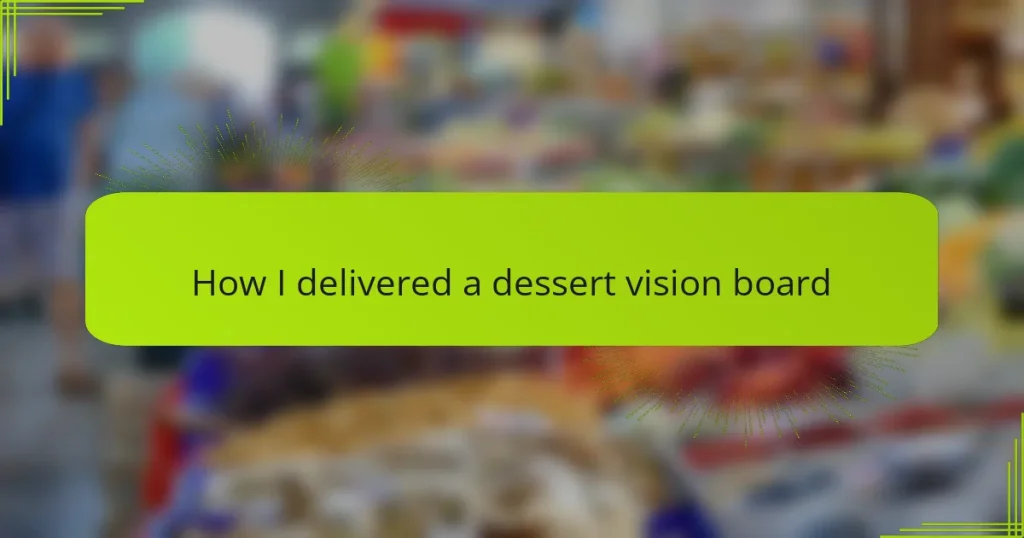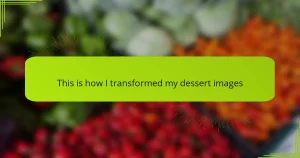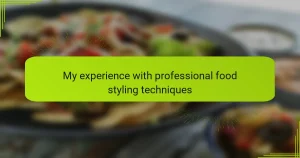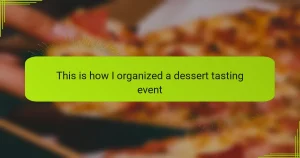Key takeaways
- Understanding dessert recipes involves appreciating flavor balance and experimenting with ingredients to create unique desserts.
- Choosing high-quality ingredients is crucial for enhancing flavor and creating emotional connections with the dessert being made.
- Creating a dessert vision board helps visualize ideas, fostering creativity and guiding the dessert-making process.
- Patience, tasting throughout the process, and sharing experiences with others are key to successful dessert creation and innovation.
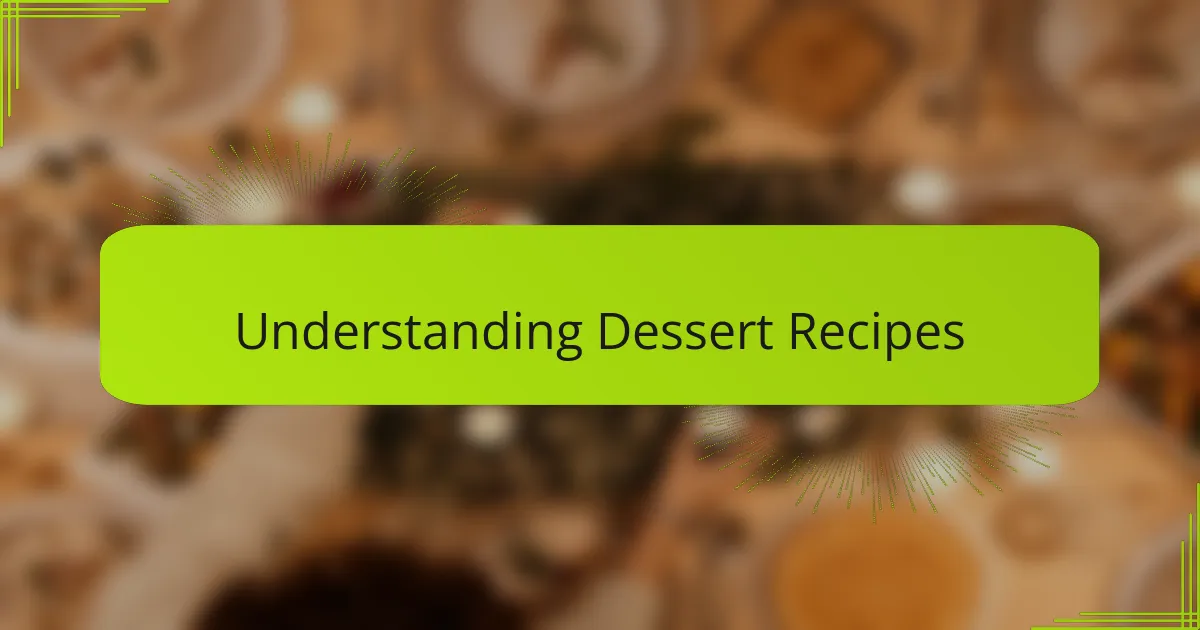
Understanding Dessert Recipes
Understanding dessert recipes goes beyond just following a list of ingredients and steps. I’ve found that truly grasping the essence of a recipe means appreciating how flavors and textures come together to create that perfect bite. Have you ever wondered why a pinch of salt makes your chocolate cake taste richer? That’s the kind of detail I pay close attention to.
From my experience, every dessert recipe carries a story or a secret technique that transforms simple components into something magical. When I first attempted a classic tiramisu, I realized that soaking the ladyfingers just right was key—it wasn’t about drowning them but about achieving a delicate balance. This moment made me truly respect the nuances in dessert making.
Dessert recipes also invite experimentation. I often find myself asking, “What happens if I swap this ingredient or adjust the cooking time?” Sometimes it fails, but more often, it leads me to a new favorite twist. Understanding recipes means being confident enough to explore and let your taste buds guide you.
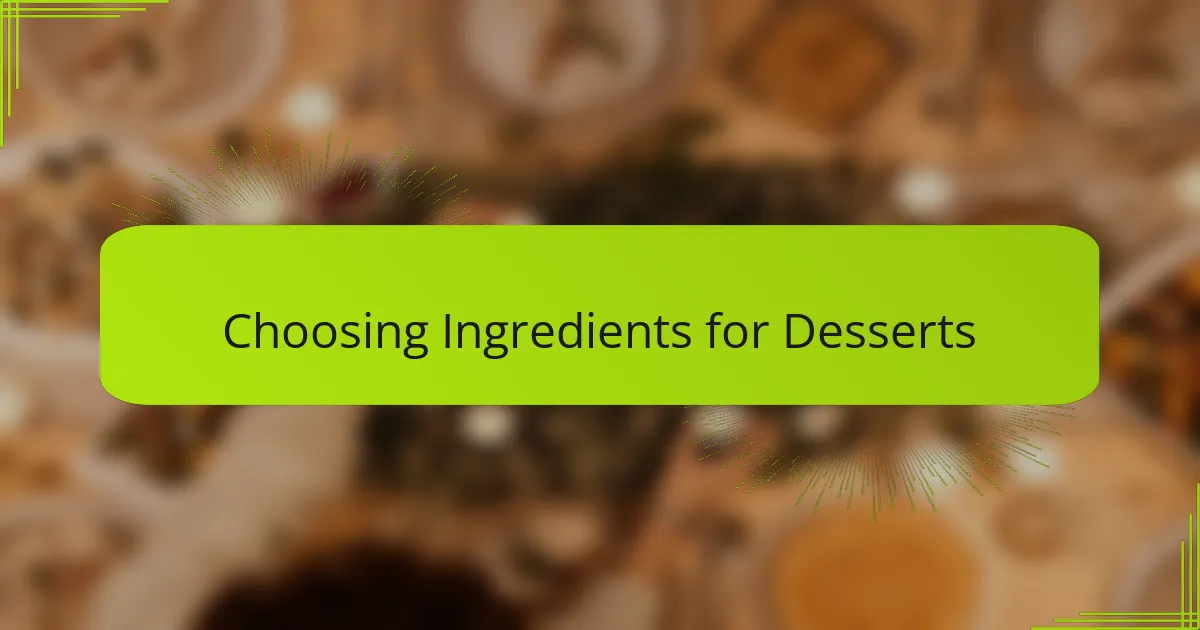
Choosing Ingredients for Desserts
Choosing ingredients for desserts is like selecting the cast for a play—each one has to bring something special to the story. I’ve learned that fresh, high-quality ingredients not only improve flavor but also inspire confidence while baking. Have you noticed how fresh vanilla beans can elevate a simple custard into something unforgettable?
Sometimes, I get tempted to cut corners with substitutes, but I’ve found that certain key ingredients simply can’t be compromised. For example, using real butter instead of margarine makes a noticeable difference in texture and richness. It’s those small choices that often separate an average dessert from a memorable one.
I also ask myself, what mood am I trying to create with this dessert? The ingredients I choose reflect that vision—lighter fruits for a refreshing finish or velvety chocolate for indulgence. Thinking this way helps me connect emotionally with what I’m making, turning a recipe into a personal expression.
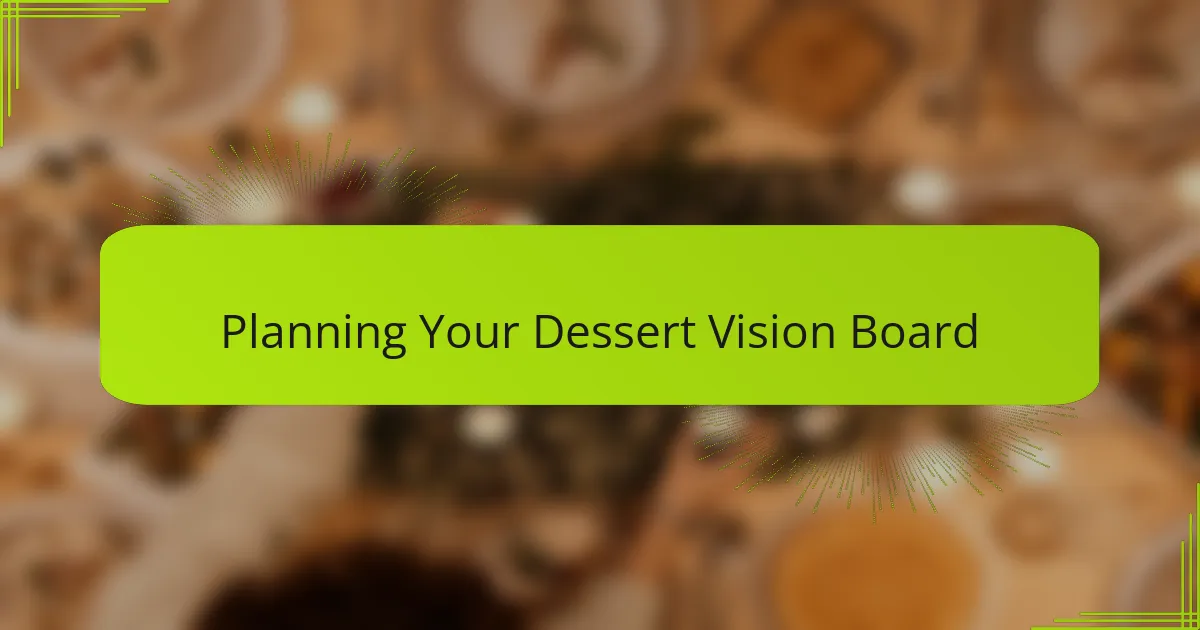
Planning Your Dessert Vision Board
Planning your dessert vision board starts with imagining the story you want your creations to tell. I often ask myself, what feelings do I want to evoke—comfort, celebration, or surprise? This reflection helps me select images and ideas that truly resonate with my dessert goals.
I like to gather everything that inspires me: photos of textures, colors, and ingredients that excite my palate. Once, I found a picture of a molten chocolate cake that perfectly captured the indulgence I craved, and it became the centerpiece of my board. This process makes the vision tangible and fuels my enthusiasm.
Another key step is setting realistic yet inspiring goals. I remind myself that the vision board isn’t about perfection but about growth and exploration. By planning with flexibility, I allow room for new ideas to emerge while keeping my ultimate dessert dreams in focus.
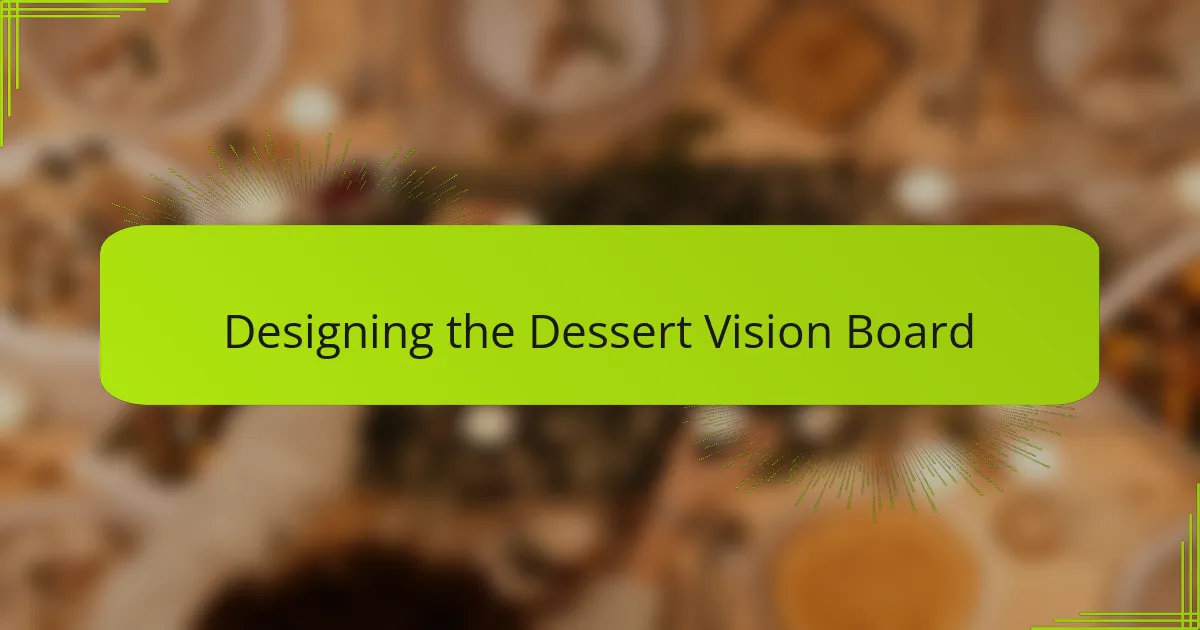
Designing the Dessert Vision Board
Designing the dessert vision board, for me, is like painting a picture with cravings and creativity. I ask myself, which desserts truly excite me right now? Sometimes, it’s the way a glossy caramel drizzle catches the light, or how a sprinkle of crushed pistachios adds that perfect pop of color and crunch. Capturing those little details on the board brings my ideas to life.
I remember sitting down with my scissors and glue, surrounded by magazine cutouts and printed photos of desserts I adore. It felt less like a chore and more like creating a treasure map—each image a clue toward the flavors and aesthetics I wanted to explore. That hands-on process made the whole vision board feel personal, almost like a conversation between my inner dessert chef and my future creations.
What really surprised me was how arranging these images helped me realize connections I hadn’t seen before—like pairing tart fruits with silky creams or balancing bold spices with delicate pastries. Designing the vision board doesn’t just map out dessert ideas; it reveals the harmony behind each combination, giving me both inspiration and confidence to experiment.
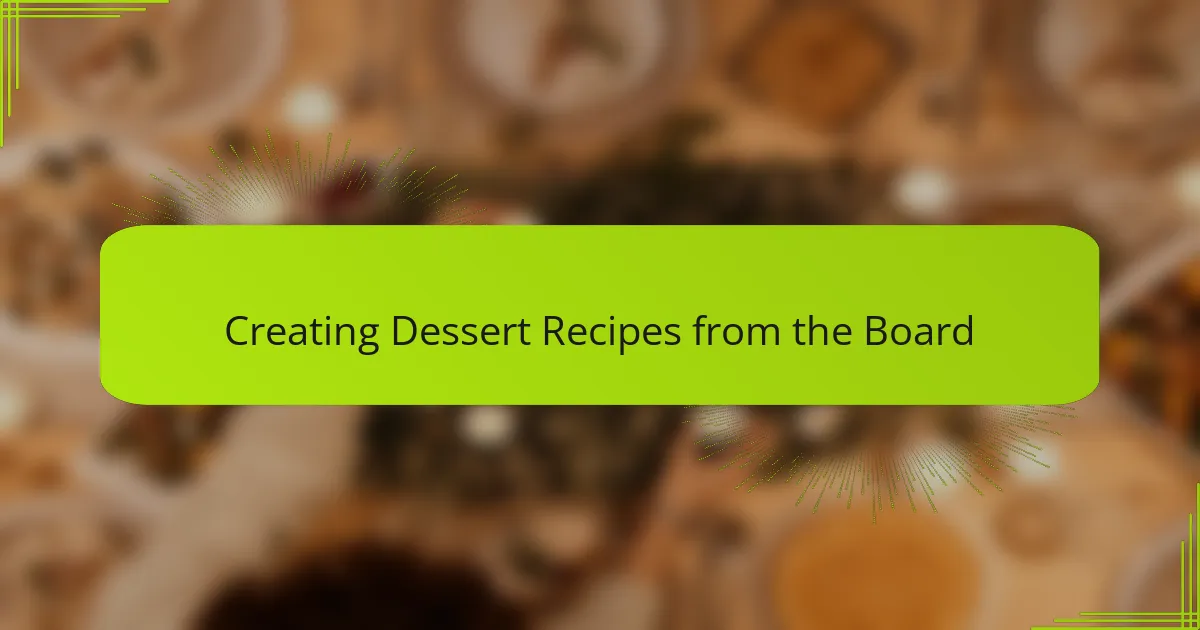
Creating Dessert Recipes from the Board
When I started creating dessert recipes from the vision board, I realized it was like bringing a collage of dreams into the kitchen. Have you ever looked at a picture of a luscious berry tart and wondered how to capture that exact freshness on your plate? For me, it meant breaking down the visual into flavors, textures, and techniques that I could translate into a recipe.
One thing I often ask myself is, how do these ingredients work together beyond just taste? The vision board showed me striking contrasts—a velvety mousse paired with crunchy praline, for example—and that pushed me to think about balance in a new way. Translating those images into recipes became a creative puzzle, where each element had to earn its place.
Sometimes, the process felt a bit like trial and error. I remember testing a recipe inspired by a picture of a layered chocolate and raspberry cake; the first attempt was too sweet, but tweaking the tartness of the raspberry filling made all the difference. Those moments reminded me that the vision board is a guide, not a rulebook, and it’s the experimentation that turns ideas into truly personal desserts.
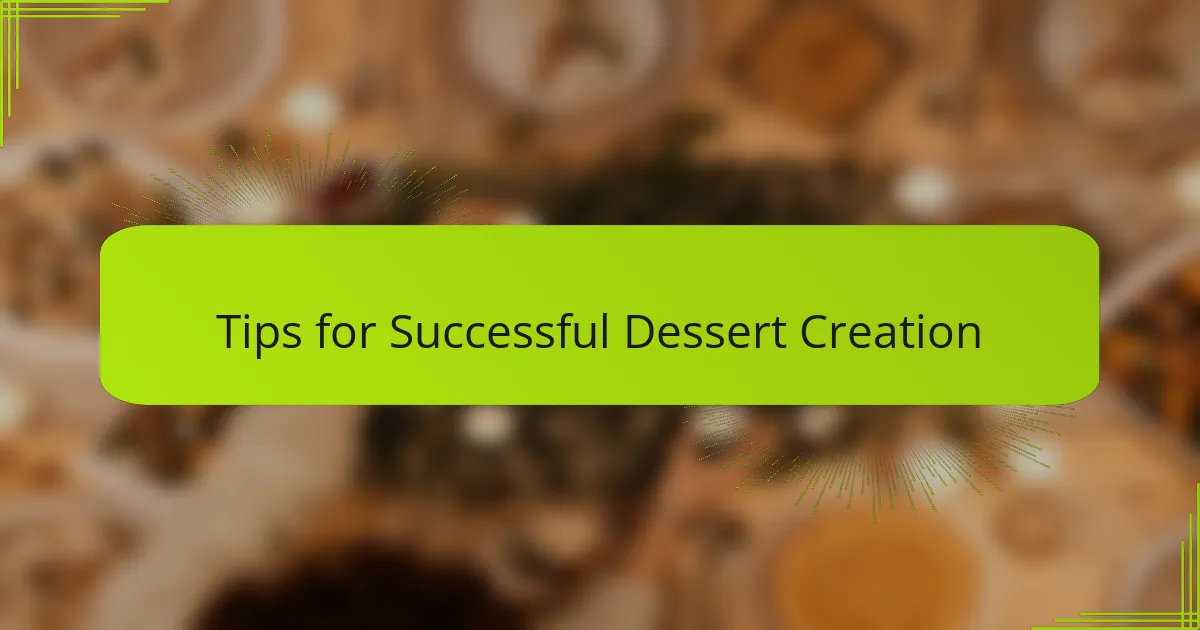
Tips for Successful Dessert Creation
Successful dessert creation, in my experience, hinges on patience and attention to detail. Have you ever rushed through a recipe, only to realize the texture or flavor wasn’t quite right? Taking your time, especially with techniques like folding or chilling, can transform a good dessert into something extraordinary.
Another tip I’ve found invaluable is tasting as you go. It might sound obvious, but constantly checking your balance of sweetness, acidity, or spice lets you adjust early. I recall making a lemon tart where tweaking the sugar right before baking saved it from being too tart or too bland—small adjustments make a big difference.
Finally, don’t be afraid to trust your instincts and experiment a little. When I first added a pinch of chili powder to a chocolate mousse, it was a risk that paid off, adding unexpected warmth and complexity. So, what daring twist might your next dessert need? Sometimes, the best creations come from those fearless moments.
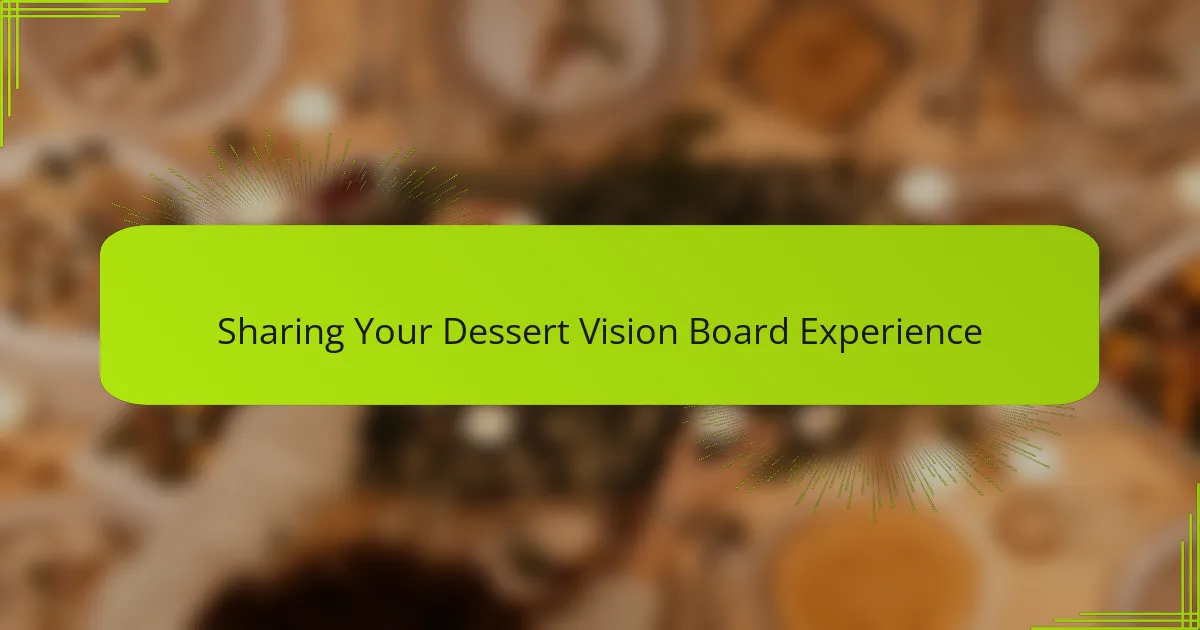
Sharing Your Dessert Vision Board Experience
Sharing your dessert vision board experience feels like opening a window into your sweetest dreams. Have you ever noticed how talking through your ideas with friends or fellow dessert lovers not only cements your vision but sparks fresh inspiration? I found that simply describing why a particular image or ingredient called to me helped clarify my goals and unveiled unexpected flavor combinations.
Sometimes, sharing the vision board invites valuable feedback that reshapes your approach. When I showed mine to a baking buddy, her suggestion to incorporate a citrus twist completely transformed one recipe idea. It was a reminder that a dessert vision board isn’t just a solitary exercise—it’s a conversation starter that can deepen your creativity and connection with others.
At its heart, sharing your dessert vision board is about enthusiasm and storytelling. How often do you get to share not just a recipe, but the passion and intention behind it? I’ve learned that expressing what each image means to me—whether it’s comfort, celebration, or adventure—makes the whole process more rewarding and brings others along on the journey.
